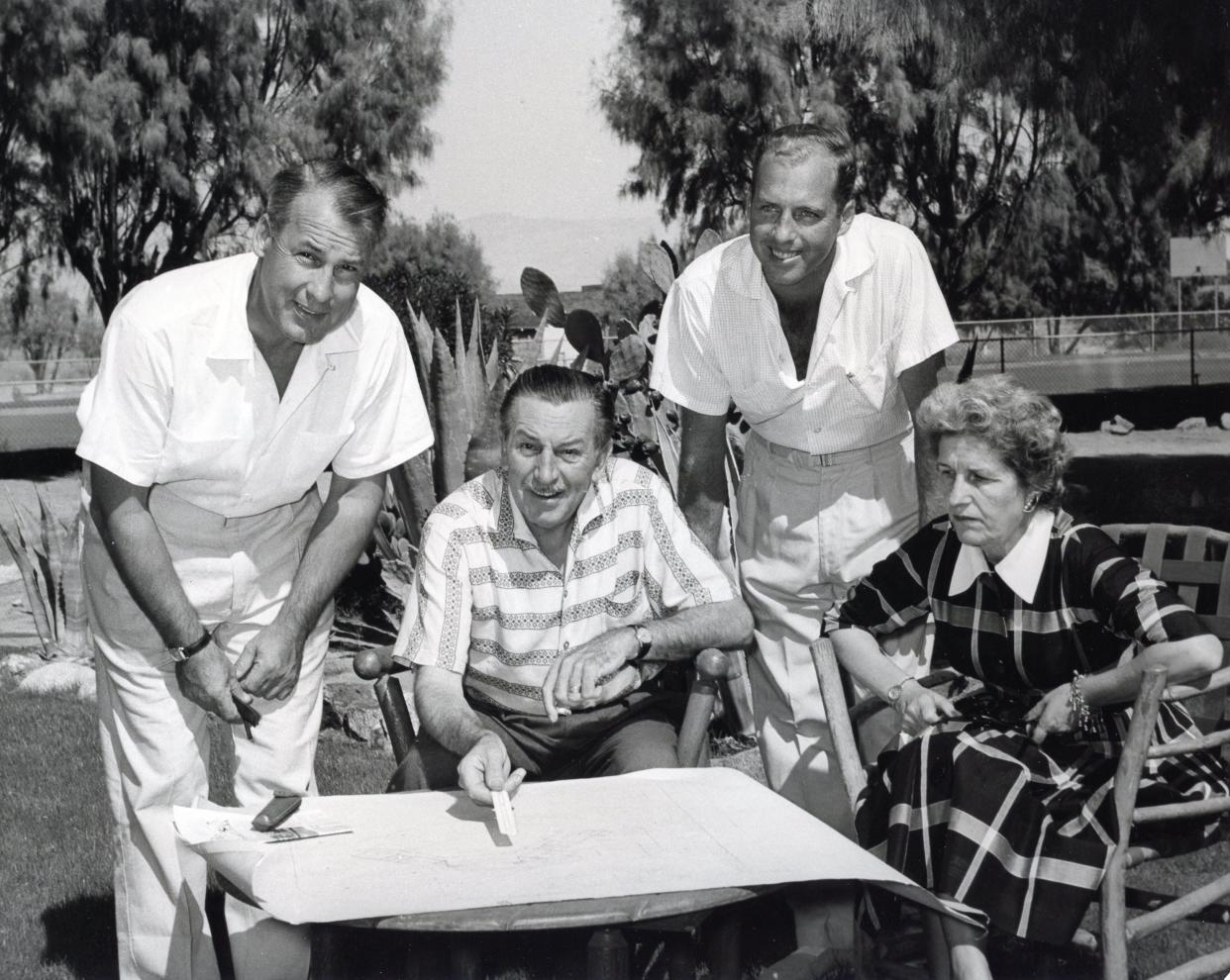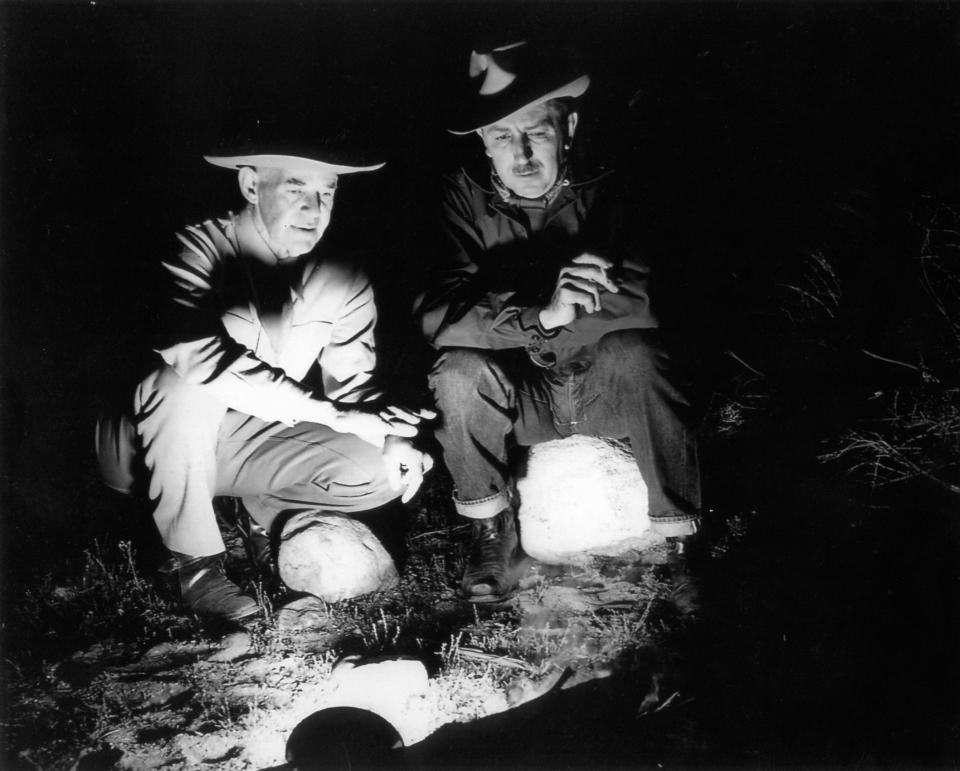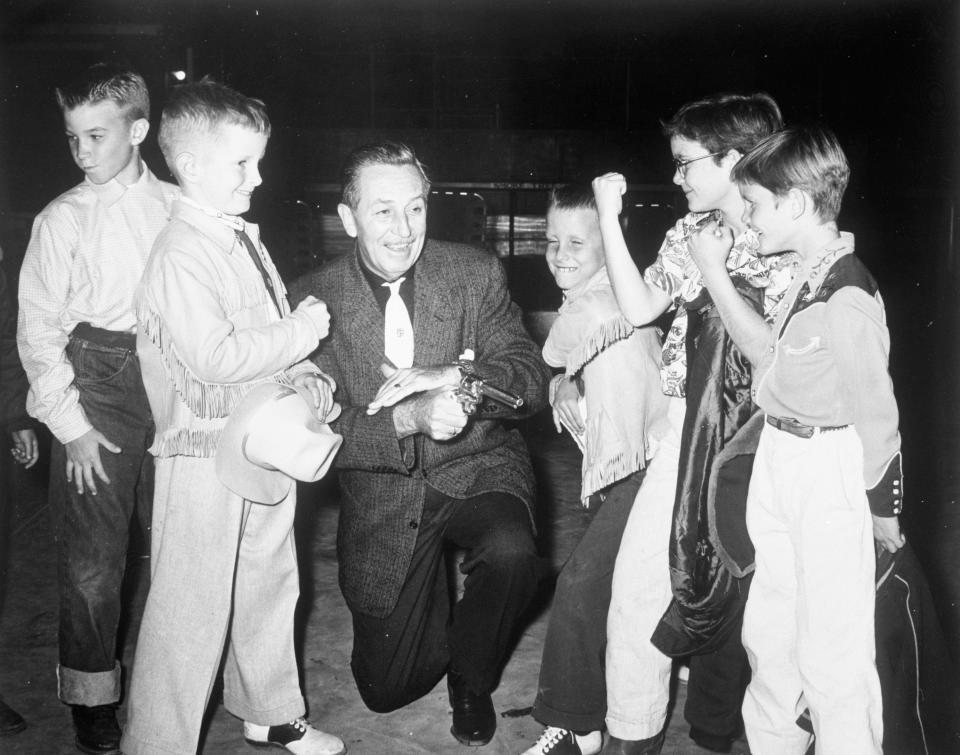History: As Disney celebrates 100 years, a look at its ongoing effects on the desert

- Oops!Something went wrong.Please try again later.
- Oops!Something went wrong.Please try again later.
- Oops!Something went wrong.Please try again later.
One hundred years of existence of a company seems a pittance when compared with the longest-lived companies in the world. Remarkably, there are hundreds of companies that are actually hundreds of years old. The oldest continuously operating company in the world is the Japanese construction company, Kongo Gumi, established in 578 AD making it an astonishing 14 centuries old.
This week the Walt Disney Company celebrated 100 years, one century, of existence since its founding on Oct. 16, 1923. The company has had an outsized influence on the world during its existence and interesting and ongoing effects on the desert.
Walt and Roy Disney founded their company from the ashes of a short-lived previous effort without knowing if the new company would fare any better. But they had learned from failure and that would prove auspicious. Disney’s arrival on the desert would be equally important, even transformative.
Disney arrived in the desert in 1936 to play polo on the new field in the center of Palm Springs bounded by Sunrise to the west, Baristo to the north and Ramon to the south. The site would eventually be repurposed for Gene Autry’s baseball stadium.

Disney heard about the desert from Ted Slocum, a Pasadena businessman and horseman, and Frank Bogert, cowboy extraordinaire and tireless promotor of the desert. Slocum and Bogert camped with Disney during horseback riding expeditions with Los Rancheros Visitadores outside Santa Barbara.
Having known Disney for years, Bogert recounted that Disney and his wife Lilly bought a lot and built a home at Smoke Tree Ranch in Palm Springs, where Slocum lived. The Disney home at Smoke Tree was designed by desert architect William F. Cody. The low-slung house featured an exterior of redwood boards, large glass windows to take in the view, and a simple, heavy shake roof.
Disney settled into the community in earnest. Bogert recalled, “Walt became very active there entertaining the children.” Disney was also invested in entertaining all children in the desert. In a letter to Allen Smith of the then Palm Springs Desert Museum, he wrote, “I have just looked at our picture The Story of the Desert, which I had intended bringing down this week-end, but it still needs additional editing and until this is done I would rather not show it. I know you want to see this picture and I will bring it down for you as soon as it’s in good shape — most likely this will be shortly after the first of the year.” The movie would end up being title “The Living Desert” and was released in 1953, the first of his “True-Life Adventure” series, earning Disney its first of 29 Oscars for the non-animated series features.
Bogert continued, “He loved lawn bowling (there is a green at Smoke Tree) and …cherished his winning cups as much as his Oscars.” Disney became a fixture at the numerous lawn bowling competitions and sponsored his own event. He was a regular at the many costume parties, breakfast horseback rides, and holiday celebrations at the Ranch.
Palm Springs would play a part in Disney’s progression as a company. Disney animated the short story of “Ferdinand” written by his neighbor at Smoke Tree, Munro Leaf. The short animated film of the story of a peaceful bull who just wants to sit in the shade of a cork tree and smell the flowers was a huge hit for the company.
Donald Gilmore, another neighbor and the head of Upjohn Pharmaceuticals invested in Disneyland, giving the brothers much needed capital when few believed in the possibility success for the theme park.

While taking golf lessons to the west of the Ranch, Disney learned the course was considering adding a water feature into the lake between holes No. 9 and 18. Disney would gift the club a monumental copper lotus water fountain shortly after. The prodigious fountain sprays celebrated the fabulous desert weather.
Owner of the L’Horizon Hotel in Palm Springs, Jack Wrather was a friend and pitched in to build the Disneyland Hotel adjacent to the park in the modern style ubiquitous in the desert.
Bogert’s recollection continued, “Walt came up with the idea that he wanted to build a large recreation park. He was fascinated with Thousand Palms and spent considerable time figuring what all he could put in its beautiful oasis. Finally, he concluded that such a park had to be in an area with greater population, so he looked for land in Anaheim. He had to raise seventeen million for the project. So he hocked everything, even selling his home in Smoke Tree. Finally, he got the American Broadcasting Company, the Santa Fe Railroad, the Bank of America and several other large corporations to kick in capital. His little park became the success story of the age.”
After the success of Disneyland in 1955, Disney bought a second lot and built a second home at Smoke Tree Ranch, such was his enchantment with the desert. The second house was designed by Carl Denny and built by Bill Foster.
Writing in 2006when the Disney Company was a mere 83 years old, Bogert summarized the course of the company, “In 1965 (Disney) purchased 25,000 acres in Florida, and that became Disney World. He died in 1966 from an acute circulatory collapse after surgery for a lung tumor. You have to wonder what a cartoonist from Kansas City who invented Mickey Mouse would think if he could see the $53 billion company bearing his name that owns theme parks, hotels, cruise lines, films, baseball and hockey franchises, a software business, movie studio and major TV network.”
Today, the Disney Company at 100 years old is still inventing, especially here in the desert. Cotino, named for the genus Cotinus or smoke tree, continues the founder’s fascination with community living, lived in the desert by Disney himself and made tangible in EPCOT, the acronym coined by Walt Disney in 1966 for Experimental Prototype Community of Tomorrow, the housing development he envisioned next to Disney World in Florida. It’s next iteration is taking form in Rancho Mirage now.
Disney’s vision has proven extraordinarily tenacious and will doubtless persist in the desert as his company enters its second century.
Tracy Conrad is president of the Palm Springs Historical Society. The Thanks for the Memories column appears Sundays in The Desert Sun. Write to her at pshstracy@gmail.com.
This article originally appeared on Palm Springs Desert Sun: Palm Springs history: Walt Disney Co. and its ongoing effects on desert

